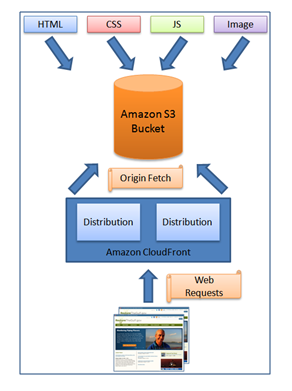One factor which plagues your AWS monthly bill is the amount spent on dealing with Big Data workloads. Amazon Web Services offers a solution with the launch of two new low cost volume types for its Elastic Block Store (EBS) service that are powered by traditional, spinning disk hard drives.
The new Throughput-Optimized HDD and Cold HDD EBS volume types let companies store files cheaply in a way that’s still useful for big data workloads like MapReduce and Kafka. The Throughput-Optimized service is aimed at apps that use data frequently, while the Cold HDD service is built for applications that reference items less frequently.
Sysfore has an incredible expertise in Big Data implementations. Contact our cloud experts and you’ll get the best deals for your EBS storage requirements.
Amazon’s interest in EBS began in 2008, with continued innovations which allow customers to optimize their storage performance and cost for a wide range of workloads.
In 2012, AWS began offering Amazon EBS volumes that incorporated advances in SSD technology to deliver high-performance persistent storage for latency-sensitive transactional workloads like databases that require consistently high input/output operations per second (IOPS).
Snapshot of the new storage volumes:
You can get more information from the official Amazon website about the EBS Throughput Optimized HDD (st1) and Cold HDD (sc1) volumes, visit http://aws.amazon.com/ebs.
- Amazon Web Services offers customers predictable performance for throughput-intensive and big data workloads with large data sets, large input/output (I/O) block sizes, and sequential I/O patterns.
- Amazon EBS customers pay only for the storage they provision, with no additional charges for throughput, and prices start at $0.025/GB month.
- Both these EBS storage volumes deliver low cost HDD storage with the predictable high-throughput required to meet the processing needs of big data applications.
- Throughput Optimized HDD (st1) volumes include a maximum throughput up to 500 MB per second per volume and Cold HDD (sc1) volumes have a maximum throughput of 250 MB per second per volume.
- All EBS volume types offer durable snapshot capabilities and are designed for 99.999 percent availability.
- Customers can now call on a new 80TB Snowball storage appliance, along with the already existing 50TB Snowball to ship their data securely from on-premises servers to Amazon’s.
- Users who don’t have Snowball-sized amounts of data to move, can opt for the S3 Transfer Acceleration service, which is designed to get moderate amounts of data transferred quickly into the AWS Simple Storage Service (S3).
- It uses the AWS edge network, which is also used for Amazon’s Cloudfront CDN and Route 53 DNS service, along with optimized network protocols, to let users upload files to S3 up to 550 percent faster than they’d be able to with a straightforward data transfer.
These storage service moves are going to help Amazon customers get data into the cloud faster, which is particularly important for companies undergoing cloud migrations.
Sysfore can help you implement the new Amazon EBS storage volumes for your business. You contact us at info@sysfore.com or call us at +91-80-4110-5555 to know more.



